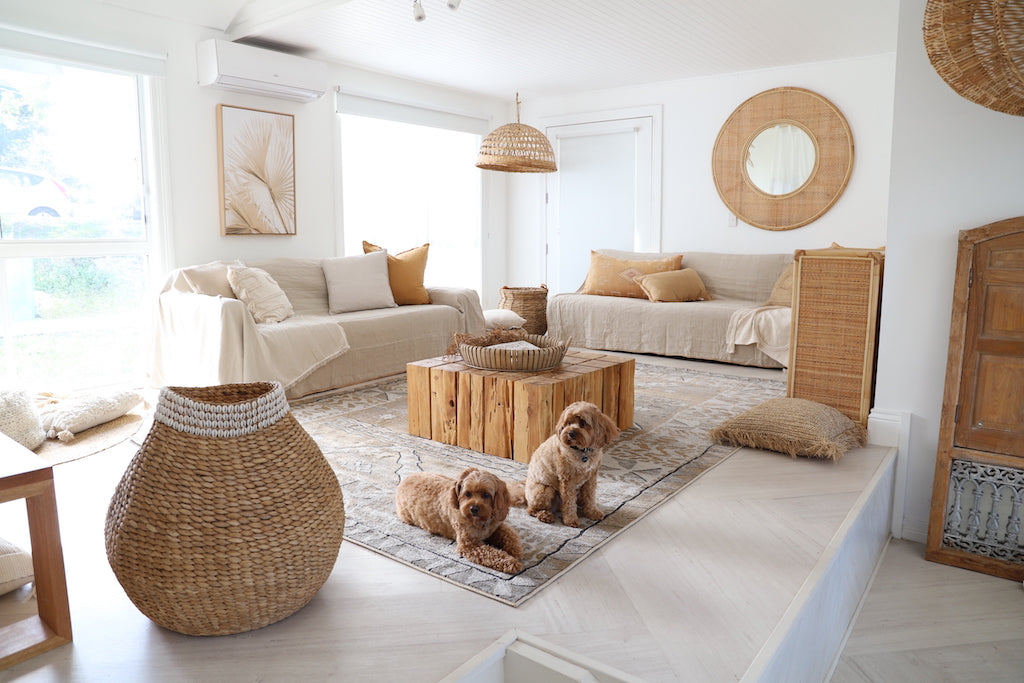
How To Balance Modern And Traditional Design In Your Home
Learn how to achieve the perfect balance between modern and traditional design in your home with expert tips and tricks. Personalise your home decor, match furniture and architecture, and combine colours and patterns to create a visually appealing space. Find harmony by choosing a dominant design style, blending complementary decor elements, and mixing colours, textures, and shapes.
Understanding Design Styles
Definition of Modern Design
When it comes to modern design, the main focus is on simplicity, functionality, and minimalism. Modern designs often feature clean lines, geometric shapes, and neutral colours. The idea is to create a space that is sleek and uncluttered, where form follows function, and a noticeable presence of man-made items such as metal, plastic and glass.
This style is perfect for those who prefer a sharp, clean look that is easy to maintain.
Definition of Traditional Design
Think warmth, elegance, and timelessness. This style is characterised by rich colours, ornate details, and classic patterns. Often made from natural materials such as wood, leather, and silk, the idea is to create a space that feels cosy and inviting, with a touch of luxury.
It’s quite ideal for those who appreciate the beauty of fine craftsmanship and the familiarity of a more organic environment.
Key Differences between Modern and Traditional Design
The key difference between modern and traditional design is their approach to style. Modern design prioritises form over function, while traditional design prioritises function over form. Modern design is characterised by clean, sharp lines, while traditional design features decorative elements such as carving, moulding, and embellishment.
Modern design favours neutral colours, while traditional design favours warm, rich hues. Ultimately, the decision between modern and traditional design will come down to personal preference and the desired mood for your space.
💡KEY TAKEAWAY: Understanding the differences between modern and traditional design styles can help you choose the right style for your space, based on your personal preferences and the mood you want to create.
Choosing Your Design Style
Personalising Home Decor
There are no hard and fast rules when it comes to mixing and matching different styles. You are free to express your creativity and showcase your unique style through your decor choices. Add personal touches such as family photos, heirlooms, a rug, or art pieces that reflect your personality to bring a sense of warmth and familiarity to your space.
Matching Furniture and Architecture
When choosing decorations, consider the overall aesthetic of your home. Look for furniture pieces and accent decor that complement the architecture and style of your house. For example, a minimalist space may require simple decor, whereas a more traditional home may call for more ornate furniture and accents.
Combining Colours and Patterns
Experiment with colours and patterns to create a harmonious and visually appealing space. Consider using an accent colour to bring life to a neutral space or combining contrasting patterns for a more eclectic look. Remember to maintain a balance between busy and neutral patterns to avoid overwhelming your space.
💡KEY TAKEAWAY: Personalising your home decor involves choosing a design style that complements the architecture of your house, mixing and matching different styles and using an accent colour or patterns to create a unique and visually appealing space.
Balancing Two Design Styles
Selecting a Dominant Design Style
To start, choose a dominant design style that will be the main focus of the room. This could be anything from traditional to modern, bohemian to minimalist. Once you've established your dominant style, you can start incorporating elements of your secondary style.
Blending Complimentary Decor Elements
To blend complementary decor elements, look for pieces that share certain commonalities. For example, if your dominant style is modern, look for modern pieces that incorporate elements of your secondary style, such as a vintage rug.
Mixing Colours, Textures, and Shapes
Mixing colours, textures, and shapes is key to creating a balanced and cohesive design. When blending two styles, opt for a neutral base and use accessories to layer on colour and texture. This will allow your two styles to coexist comfortably.
💡KEY TAKEAWAY: When balancing two different design styles, be strategic in your approach by choosing a dominant style and blending complimentary decor elements. Use colours, textures, and shapes to create a cohesive design.
Combining Multiple Design Styles
Sprucing Up Furniture with Decorative Materials
One way to combine design styles is by sprucing up your furniture with decorative materials. For instance, adding fun and colourful fabric upholstery to a traditional sofa can give it a modern touch, while an ornately designed wooden coffee table can add a vintage feel to a contemporary living room. The possibilities are endless when it comes to creating a new mixture of styles.
Merging Art Pieces to Merge Design Elements
Another great way to combine different design styles is by merging art pieces to merge design elements. For example, if you have an abstract painting, you can create a beautiful and eclectic space by pairing it with rustic wooden furniture. Mixing different materials and textures can create a coherent yet unique style that reflects your personality.
Pairing Textures and Surface Finishes
Finally, pairing textures and surface finishes can create a stunning visual harmony that blends different design styles. Combining a shiny floor with a rough-textured coffee table can create an attractive contrast that draws the eye and creates an interesting focal point.
💡KEY TAKEAWAY: Combining multiple design styles can create visually stunning spaces that reflect your personality and taste. Sprucing up furniture, merging art pieces, and pairing textures and surface finishes are great ways to create eclectic, beautiful interiors.
The Harmony in Design
Benefits of Balancing Multiple Design Styles
Integrating multiple design styles into your home decor can have several benefits that make the effort worthwhile. For starters, it allows you to create a unique look that reflects your personality and taste. Mixing materials, textures, and patterns can add depth and interest to your space. Additionally, blending styles can be a practical solution for couples or families who have different design preferences.
Embracing Your Unique Design Style
It's essential to identify and embrace your unique design style when striving for harmony in home decor. If you're not sure what your style is, start by researching different design styles and identifying the elements that resonate with you. You can use this information to create a mood board or design plan that guides your decisions.
Tips and Tricks to Finding Harmony in Home Decor
Finding harmony in home decor is all about creating a cohesive look that brings everything together.
Start by selecting a colour palette and coordinating materials, textures and patterns that complement each other. Be mindful of scale and proportion when selecting furniture and decor. Consider the flow of the room and arrange furniture in a way that encourages conversation and relaxation. Finally, don't be afraid to experiment and try new things – that's how you'll discover what works best for you.
💡KEY TAKEAWAY: Achieving harmony in home decor is possible by embracing your unique design style and balancing multiple design styles. Follow these tips and tricks to create a cohesive look that reflects your personality and taste.
You deserve a home that exudes style and personality. At Miss Amara, we're here to help you achieve just that by offering a wide range of high-quality rugs and free design consultations.


















